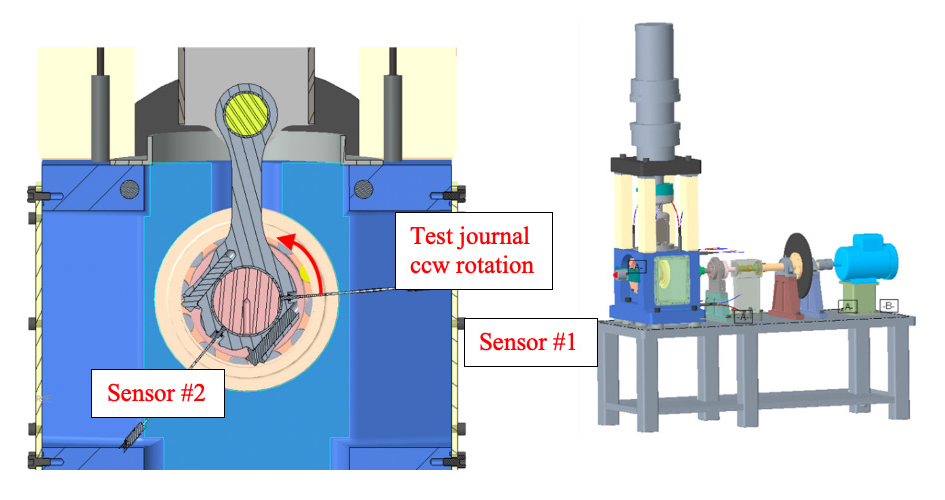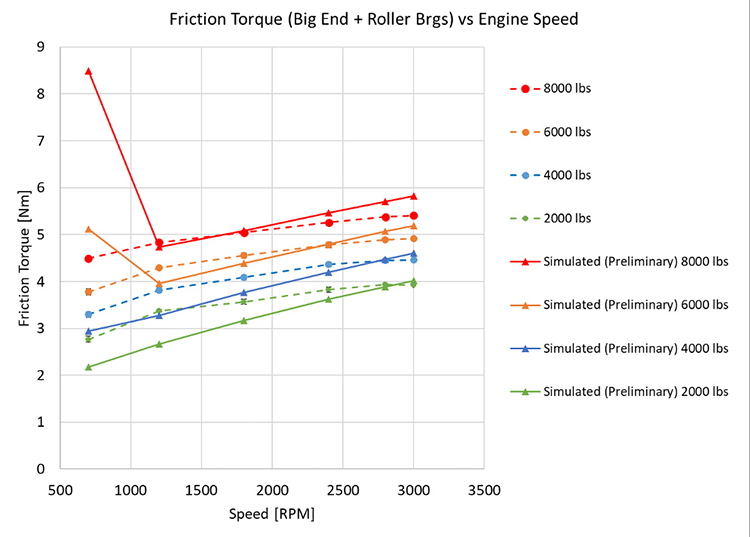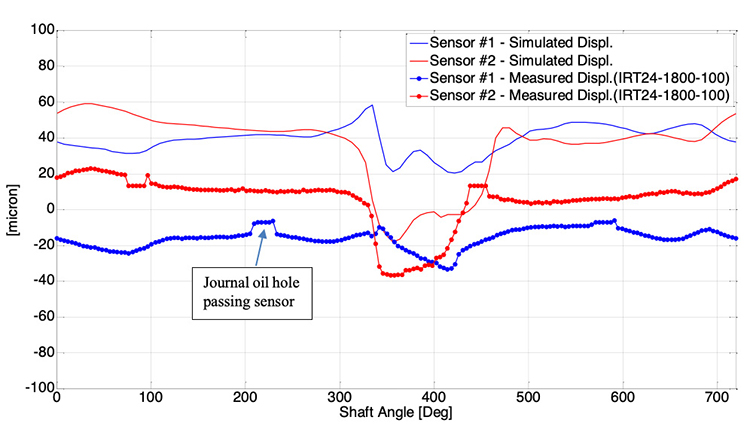Background
Hydrodynamic plain bearings are used in a wide variety of machines. Trends in most applications include increased unit loading capability with simultaneously increasing life expectations. Improvements in materials, lubricants, and machining capability have helped address the requirements, but oil film thicknesses are often on the order of one micron or less. Design validation challenges include the fact that oil films are thinner than can be resolved with sophisticated measurements, oil film behavior is highly non-linear with increasing load, and the sensitivity of results to local variables and lubricant properties is extremely high.
Computational analysis capability is also advancing. It is now practical to include bearing and housing elastic deformation in what is termed elastohydrodynamic (EHD) modeling. With a design problem dependent on micron-level deflections, EHD is recognized as a valuable tool. Validation is limited by measurement capability, and the objective of this exploratory research was to use available tests to gain directional insights toward interpreting EHD model results.
Approach
SwRI previously developed and constructed the dynamic bearing test rig shown in Figure 1. The rig is well-instrumented and includes static and dynamic measurement of shaft orbit and bearing friction. The approach taken in this project was to create an EHD model of the test rig and compare modeled results to recent measurements. The work is seen as an important early step in validating EHD modeling capability. Creating the “packaged” capability of EHD modeling and the dynamic bearing test rig will be valuable to clients both for bearing system development and their own model validation efforts.

Figure 1: SwRI’s dynamic bearing test rig.
Accomplishments
Comparative evaluation was completed in three areas:
- Friction between the bearing and shaft.
- Orbital position of the shaft versus time under dynamic loading and resulting oil film thickness.
- Bearing contact wear distribution over the loaded area of the bearing.
Modeled and measured friction versus shaft speed and bearing load is shown in Figure 2. Very good agreement was seen under all cases except those at the highest loads and lowest speeds. At these points, the model predicted asperity contact between the shaft and bearing, resulting in a friction spike not observed in measurements. This may be explained by inability of the model to accurately predict mixed-film lubrication – a known shortcoming – or by asperity contact resulting in immediate deformation or micro-tearing of the bearing surface not immediately picked up by the measurements. Other bearing scuff measurements have shown only intermittent friction spikes during metal-to-metal contact that may not have been resolved in this test.

Figure 2: Modeled and measured friction versus shaft speed and bearing load.
Figure 3 shows an example comparing predicted and measured oil film thickness at the two measurement locations in the bearing test rig during cyclic or dynamic loading. Both locations show excellent trend agreements but at offset magnitudes. The offset is not fully explained at this time but measurement resolution and the small absolute magnitudes being quantified are important contributors to the explanation.

Figure 3: A comparison of predicted and measured oil film thickness at the two measurement locations in the bearing test rig during cyclic or dynamic loading.
In each evaluation, good directional agreement was observed between the EHD model and the bearing test measurements. Quantitative agreement varied but it is recognized that the micron-level measurements tend to exaggerate any mismatch and push the limits of measurement accuracy. Advances in SwRI’s EHD modeling capability were achieved and the demonstrated coupled use of modeling and rig testing is being shared with interested clients.
